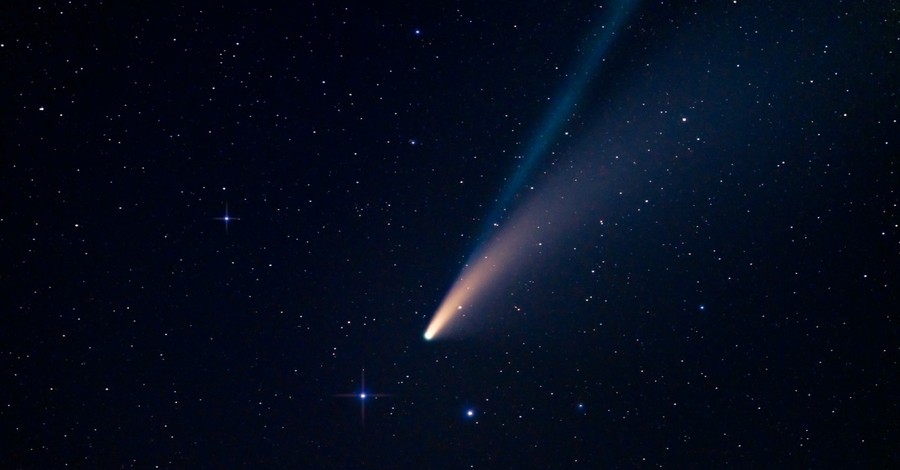
A new comet has appeared in the Earth's atmosphere, and viewers have only one more chance to see it this month before it is gone forever.
C/2021 A1, better known as Comet Leonard, was discovered on January 3, 2021, by American astronomer Gregory J. Leonard at the Mount Lemmon Observatory in Arizona.
At the time of the discovery, Leonard noticed a fuzzy patch of light traveling across space through a series of four images taken with the 1.5-meter telescope at the observatory.
"The fact that the tail showed up in those images was remarkable, considering that the comet was about 465 million miles out at that point, about the same distance as Jupiter," Leonard said in a statement.
Comet Leonard is believed to have come from the Oort Cloud, a vast area surrounding the solar system where most long-period comets come from.
According to Star Walk, the comet is known to have a hyperbolic trajectory, meaning that it will cross the Solar system once and will never return. So far, Comet Leonard's best visibility on Earth was on December 12, moving at an intense speed of about 44 miles per second (70 km/s).
On December 17, the comet is expected to pass extremely close to Venus.
"There is a small chance Venus will pass close enough to the comet's path where it may pick up some dust grains in its atmosphere, producing a meteor shower on our neighboring planet," Leonard said.
Comet Leonard will also be visible in the Southern Hemisphere on December 25 in the Constellation Microscopium.
Comet Leonard has a spike-shaped dust tail and a long gas (ion) tail, which is about twice the size of a Full Moon. Both tails will be the same for most of the time the comet will be visible.
The comet may also have an anti-tail pointing in the opposite direction of the other tails.
This isn't the first time Comet Leonard has passed through our solar system. According to the University of Arizona, the comet is believed to have crossed Earth's path about 80,000 years ago, only to return 40,000 years later. Leonard believes this time around will be the comet's last visit to our solar system.
"This is the last time we are going to see the comet," Leonard said. "It's speeding along at escape velocity, 44 miles per second. After its slingshot around the sun, it will be ejected from our solar system, and it may stumble into another star system millions of years from now."
Photo courtesy: Justin W/Unsplash
Milton Quintanilla is a freelance writer and content creator. He is a contributing writer for CrosswalkHeadlines and the host of the For Your Soul Podcast, a podcast devoted to sound doctrine and biblical truth. He holds a Masters of Divinity from Alliance Theological Seminary.










